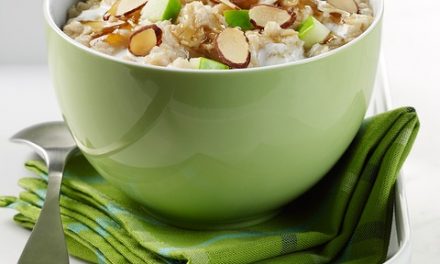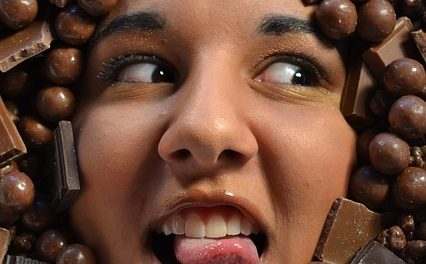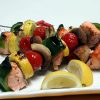Traditionally for most consumers the generic term "sugar" means simply the white sugar crystals, or table sugar, that are stirred into or sprinkled on foods. These familiar crystals are technically known as sucrose. Sucrose is a disaccharide--that is, it's composed of two simple sugar units, in this case, glucose and fructose. White sugar comes from sugar cane or sugar beets that have undergone a rigorous refining process. White sugar crystals can be used as is, compressed into cubes, or further pulverized to superfine, then to confectioner's, or powdered, sugar. Brown sugar results from mixing white sugar crystals with molasses. Other forms of sucrose are beet sugar, maple sugar, turbinado sugar, and raw sugar. Sucrose, however, is only one of a subgroup of sugars (see accompanying chart), and all sugars are carbohydrates. Monosaccharides, or single sugar units, include glucose, fructose and galactose. Monosaccharides also are the digestive end product of polysaccharides, the complex carbohydrates (starches) in fruits, grains and vegetables. Other disaccharides besides sucrose include lactose (glucose and galactose), also called milk sugar, and maltose (two units of glucose), also called malt sugar. For labeling use and for making comparative claims, the Food and Drug Administration defines sugars as all mono-, di-, tri-, and tetrasaccharides and their derivatives, such as sugar alcohol, says Youngme Park, Ph.D., a nutritionist with FDA's Center for Food Safety and Applied Nutrition. He says this includes all carbohydrate sweeteners with the same functional and physiological effect that can be used interchangeably in the food supply. After complex carbohydrates are broken down to simple sugars (most sugars and carbohydrates are eventually broken down to glucose), the sugars are absorbed into the bloodstream and go to the liver. There they may be stored as glycogen or used immediately as glucose for energy by the body or brain."The body uses glucose as its simplest form of energy," says Judith Wurtman, Ph.D., research scientist in the Department of Brain and Cognitive Sciences at the Massachusetts Institute of Technology. "So for people who need calories, that is, those who are recovering from an operation or who are shipwrecked, sugar can keep them alive."Thomas Jukes, Ph.D., professor of biophysics at the University of California at Berkeley, tells of his experiments feeding laboratory rats protein, vitamins, minerals, and sugar as the sole source of carbohydrates. The rats thrived, he says. "Fish is not a brain food," concludes Jukes. "Glucose is."Sucrose occurs naturally in most green plants, says Sarah Setton, vice president for public affairs, The Sugar Association, Washington, D.C. It is produced by photosynthesis, which is the use of the sun's energy in the formation of food by plants. People would have to stop eating fruits and vegetables and any products incorporating them to cut sugar out of their diet. People seem to think that there is a difference between sugar in an apple and sugar in the sugar bowl," she adds. "But the way the body uses sugar is all the same. The body can't tell where the sugar is from."A Taste for Sweets
Americans have become conspicuous consumers of sugar and sweet-tasting foods and beverages. We have developed a relentless sweet tooth, "a severe addiction to sweetness," says Joan Gussow, Ed.D., professor of nutrition and education at Columbia Teachers College, Columbia University in New York City.According to U.S. Department of Agriculture data on the amount of caloric sweeteners used in food, there has been an increase of more than 16 percent on a per person basis over the past two decades, and more than half of the increase has occurred in the past five years. Caloric sweeteners include sugar, high-fructose corn syrup, pure honey, and edible syrups.Paul Lachance, chairman of the department of food science at Rutgers University in New Jersey states it another way. He estimates that, based on a 2,000-calorie-a-day diet, the average American consumes about 300 calories from sugars added to food. That comes to nearly 14 teaspoons of table sugar a day.Gussow has her own theory about why sugar is so prominent in the American diet. It's for taste, she says. "I grow my own vegetables and fruit. And when I pick, cook and eat my parsnips, for example, they are as sweet as sugar," she says. "But food is shipped all over the place, and when food gets too old, much of the sugar turns to starch. The natural sweetness is gone, and people sugar food to give it flavor."As yet, no scientist has established any limits for sugar consumption. In the typical American diet today (composed of about 45 percent carbohydrates, 20 percent protein, and 30 to 35 percent fat) all added and naturally occurring sugars account for about 21 percent of the total daily caloric intake. A 1986 FDA report estimated that sugars added to food accounted for 11 percent of calories consumed.Yet if people eat increasingly larger quantities of caloric (nutritive) sweeteners in general, these could compete with and crowd out other nutrients, warns Jane Hurley, associate nutritionist at the Center for Science in the Public Interest, Washington, D.C. People may consume many of their calories each day from a sugary soft drink or candy bar. "Those foods have few important nutrients we need," she says. "People are better off having an apple as a snack than a candy bar."The Safety Issue
Over the last several decades, sugar has taken on the villain's role in the American diet. General sugar-bashing has led to "sugarphobia" as Jukes calls it and the unfounded fear that eating refined sugar causes many health problems, including heart disease, diabetes, anxiety, fatigue, depression, hyperactivity, and even criminal behavior.But, in fact, added sugar at current levels is not detrimental to health. According to the landmark 1986 FDA Report of Sugars Task Force, sugar, when consumed normal or moderate quantities, cannot be linked to any disease, nor does it create a dependency.Walter Glinsmann, M.D., FDA's associate director for clinical nutrition and senior author of the task force report, explains that members of the task force estimated the intake figures and trends of both added and naturally occurring sugars, based on USDA data. They also reviewed the scientific literature dealing with possible harmful effects of sugar consumption on numerous conditions, including tooth decay, glucose tolerance, diabetes mellitus, lipidemias (high blood fat), cardiovascular diseases, obesity, gallstones, and cancer. "Based on that work," says Glinsmann, "we decided that sugars are safe as they are now used in the food supply." If there is a significant change in the way Americans consume sugars, he adds, then scientists must reevaluate their role.As Glinsmann observes, FDA does not say that eating unlimited amounts of sugars is safe. "There are not good or bad foods, only good or bad diets," he says. "If half your diet is pure sugar, that is not healthy. ... In a normal, varied diet, there are no adverse effects of sugar itself."The task force did find that sugar can cause dental cavities, he says, but adds that so can other fermentable carbohydrates, such as dried fruit and honey, under the right conditions.Despite the report, some consumers persist in linking sugar consumption with assorted ills, such as hyperactivity and aggressive behavior in children. This is often reported by parents who say that their children are uncontrollable after eating candy and other sugary sweets.Glinsmann points out that sugar has not been shown to be a factor in hyperactivity. Studies of children and adolescents at the National Institutes of Health in Bethesda, Md., and elsewhere have looked at groups of individuals served sugar or a placebo (an inactive substance given as a control when testing another substance). Glinsmann points out that no researcher has found that sugar has had any discernible negative effect on children's behavior. To the contrary, sugar often has a soothing effect.It also calms adults, says Wurtman, who has studied the relationship between carbohydrate consumption and mood. When people report having a sugar high or jitters, Wurtman asks them what was happening before they took a mouthful of something sweet. "When people feel the need to eat," she says, "They usually are jittery. But 20 minutes after eating, they are no longer jittery." In fact, the opposite happens: After eating sugar, people become calm or even sleepy, she says, an effect caused by sugar raising the level of a calming brain chemical called serotonin. Sugar in its pure form is the best nonprescription antidepressant, she says.Sugar by Other Names
Numerous nutritive and nonnutritive substitutes for sucrose vie for its place as a sweetener. All nutritive substitutes - such as honey, concentrated fruit juices, dextrose (also known as glucose), maple and corn syrups, fructose (levulose or fruit sugar), sugar alcohols, and high-fructose corn syrup contain and contribute calories.Perhaps the most commonly used nutritive sweetener is high-fructose corn syrup, a sweet product manufactured from cornstarch and containing a high level of fructose, explains Kyd Brenner, director of public affairs for the Corn Refiners Association in Washington, D.C. High-fructose corn syrup is very close to the composition and calorie content of cane sugar, he says, and the syrup can be used as a direct and inexpensive substitute for cane sugar when liquid sweeteners are called for. It is used extensively in soft drinks, condiments, jams, jellies, and wine and is not available for home use.Of the sugar alcohols, sorbitol (60 percent as sweet as sucrose with about the same number of calories per gram) is used in such products as hard and soft candies and chewing gums. Xylitol, another sugar alcohol, has limited FDA approval for special dietary uses. A third sugar alcohol, mannitol, has been removed from the GRAS (generally recognized as safe) list, and is regulated as an 'interim' food additive. This means that its current use is considered safe, but some questions have been raised that must be resolved to fully determine what limitations, if any, should be imposed. Mannitol is still being used in some products.Both mannitol and sorbitol, when taken in large amounts, can cause diarrhea. Products whose reasonably foreseeable consumption may result in a daily ingestion of 50 grams of sorbitol or 20 grams mannitol must bear the labeling statement: "Excess consumption may have a laxative effect."The sugar polymer polydextrose, because of its bulking properties, is used to replace a number of the technical effects of sucrose in various baked goods, salad dressings, frozen desserts, and candies. Because of its structure, polydextrose is not readily digested, so it is a low-calorie sucrose substitute. But it does not provide sweetness, so it is likely to be used with a nonnutritive sweetener. FDA is presently considering petitions for its use in other products such as in fruit and peanut butter spreads, sweet sauces, toppings, and syrups, and as a formulation aid in film coatings in vitamin and mineral supplement tablets.Nonnutritive Sweeteners
Nonnutritive, or high-intensity, sweeteners satisfy America's sweet tooth without adding calories. Presently, manufacturers are using three such sweeteners to replace sugar in a variety of food and nonfood items such as mouthwashes and pill coatings.One of these is saccharin, 300 times sweeter than table sugar and with zero calories. It is sold in liquid, tablets, packets, and in bulk. Saccharin has had a stormy past, with studies in the United States and Canada implicating it in the development of certain cancers. In the late 1970s, FDA contracted with the National Academy of Sciences (NAS) to study cancer-causing agents and toxic substances in foods, including saccharin. NAS reports showed that saccharin is a potential cancer-causing agent in humans. A congressional moratorium protecting saccharin's continued use has been renewed periodically by Congress. The required label warning on saccharin states, "Use of this product may be hazardous to your health. This product contains saccharin which has been determined to cause cancer in laboratory animals."Aspartame - about 200 times sweeter than table sugar and with the same number of calories per teaspoonful has been shown to be safe. However, some people have reported that they are sensitive to it, although such a sensitivity has not been confirmed by scientific studies. Certain individuals suffering from a rare genetic disease called phenylketonuria cannot tolerate the amino acid phenylalanine, one of the building blocks of aspartame as well as naturally occurring proteins. Therefore, products containing aspartame must bear on the label a statement that they contain phenylalanine. Aspartame is available in packets and is used in numerous foods, including cereals, beverage bases, and ready-to-drink iced tea, but because it is not generally heat stable, it is not used for cooking. Food technologists have been working on ways to overcome this instability.Acesulfame K (K is the chemical symbol for potassium)-130 times sweeter than table sugar?was approved by FDA in July 1988 as a sugar substitute in packets or tablets and as an ingredient in such products as chewing gum, dry drink mixes, and gelatins. The body does not metabolize acesulfame K so it contributes no calories. Soluble in water, it is stable at normal temperatures and does not break down during cooking.FDA banned the use of the sweetener cyclamate in 1970 because of concerns over its safety, but cyclamate is again under consideration for use in specific products, such as tabletop sweeteners and nonalcoholic beverages.Under Development
Scientists continue to develop new sugar substitutes. For example, among the nutritive sweeteners, petitions for the use of the sugar alcohols isomalt (in gelatins, hard and soft candies, and baked goods), maltitol (in candy and cough drops), lactitol (in candy, chewing gum, baked goods, and frozen dairy desserts), and hydrogenated starch hydrolisates (in candy, chewing gum, and confections) are under current FDA review, says Art Lipman, Ph.D., a supervisory consumer safety officer with FDA's direct additives branch.FDA has also received numerous inquiries about the regulatory status of a naturally occurring high-intensity sweetener known as stevia (or stevioside), says Lipman. Extracted from a plant grown in South America, stevia is 300 times sweeter than table sugar and is used for sweetening in Japan and other countries. Lipman says no petition has been filed for its use in the United States.Two nonnutritive sweeteners are being studied, says George Pauli, Ph.D., chief of the novel ingredients and policy development branch. These are alitame (Pfizer), which is chemically similar to aspartame, and sucralose (McNeil Specialty Products Co.), a chlorinated sucrose that has been made indigestible. FDA is also considering petitions for additional uses of the sweetener acesulfame K in beverages and baked goods and of aspartame for bulk use and in breakfast cereals, malt beverages, candies, and cooked foods.Eating foods sweetened with nonnutritive sweeteners rather than sugar is an individual choice, says Laura Tarantino, an FDA consumer safety officer. Our law says only that we [FDA] need to assess the safety of a new food additive and its technical effect," she says. "Nonnutritive sweeteners are safe to use. But we don't tell people to replace sugar with artificial sweeteners."In the future, consumers wanting to know which sweeteners are present in their foods need only read the label. According to an FDA labeling proposal, all sweeteners will be listed together in the ingredient list, under the collective term 'sweetener,' when more than one sweetener is used in a product (following the collective term, each sweetener would be listed in parentheses in descending order of predominance by weight of the sweetener in the food). According to an FDA proposal published late in 1991, it would be mandatory for all complex carbohydrates and simple sugars to be listed on the nutrition label, says Lynn Larsen, Ph.D., director of the Center for Food Safety and Applied Nutrition's Executive Operations Staff.People may have an inherent preference for sweetness, and that may have helped our ancestors survive, since bitter-tasting plants are generally not fit to eat. But beyond survival, people seem to have discovered that sweet flavors really help make eating pleasurable.Sweet Talk Common Sugars
- Monosaccharides
- Glucose (also called dextrose) [GRAS]
- Fructose- fruit sugar (also called levulose) [GRAS]
- Galactose - cannot be directly added to food
- Glucose (also called dextrose) [GRAS]
- Disaccharides
- Sucrose (glucose + fructose) white table sugar, beet sugar, turbinado sugar, raw sugar
- Lactose - milk sugar (glucose + galactose) [GRAS]
- Maltose - malt sugar (glucose + glucose) [GRAS]
- Sugar Alcohols
- Sorbitol [GRAS]
- Xylitol - limited FDA approval for special uses,
- Mannitol - removed from GRAS; regulated as "interim food additive"
- Nonnutritive and High-Intensity Sweeteners
- Aspartame [approved]
- Acesulfame K [approved]
- Cyclamate [banned]
- Saccharin - remains on market through congressional moratorium
FDA / FDA Consumer








